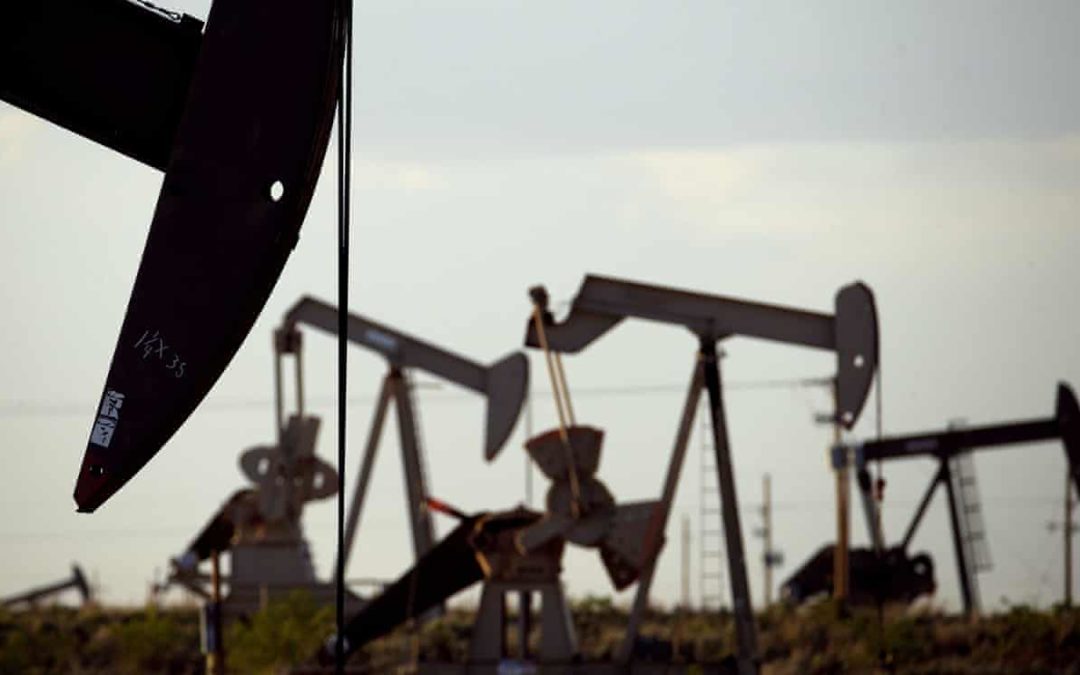
Are we being kept safe from ‘forever chemicals’ injected into fracking sites?
SOURCE: The Guardian
DATE: July 21, 2021
SNIP: Not willing to rest their laurels on the theft of the future, the fossil fuel industry is now salting the earth with forever chemicals.
In a bombshell exposé from Physicians for Social Responsibility (PSR) and the New York Times last week it was revealed that per- and polyfluoroalkyl substances (PFAS) were readily used at fracking sites across the US.
PFAS never break down, a disconcerting fact that has led many to call them “forever chemicals”. Such durability comes with surprising mobility as these chemicals have proven preternaturally gifted at gliding through geological and geographic borders with ease. Oh, and they are toxic.
None of these worrisome properties proved sufficient to dissuade the fossil fuel industry from injecting PFAS into at least 1,200 fracking wells in the United States, including in states where wastewater from oil and gas operations is routinely sprayed on roads and farms.
This revelation comes days after Unearthed released a video of fossil fuel executives bragging about just how easy it has been to sabotage legislation aimed at addressing climate change and petrochemical pollution, including PFAS.
“They’re called forever chemicals,” one ExxonMobil executive said, “which basically means these chemicals never, never deteriorate.”
While most scientists agree that such toxic immortality warrants sensible restrictions on PFAS use, ExxonMobil disagrees. According to the videos, company executives launched a stealth campaign to undercut the scientific consensus and surging momentum to regulate PFAS. ExxonMobil’s preferred strategy of obstruction? Commission another government study.
In the meantime, 130 oil and gas companies (including ExxonMobil) have been dumping forever chemicals into fracking sites in at least six different states.
The use of PFAS in fracking “brings together two planetary emergencies”, said Barbara Gottlieb of PSR: contamination and climate. As climate change tips so much of the United States into a parched drought with inescapable heatwaves, what water remains is increasingly poisoned by PFAS.
“We already know that over 200 million people have PFAS in their drinking water. Add to that the additional number of people surrounded by fracking sites in their literal back yards, and you have the majority of the population affected by a dangerous class of PFAS chemicals,” Phil Brown, who directs a research center on PFAS contamination, told me.
At one Encana/Athlon fracking site in Glasscock county, Texas, it is estimated that drilling operators injected 324 pounds of PFAS in a single well. As Dusty Horwitt, the lead author of the PSR report explained, a minuscule amount of PFAS can render a titanic amount of water undrinkable. “One measuring cup of PFOA could contaminate almost 8bn gallons of water.”
As other sectors distance themselves from forever chemicals and the ungodly problems they pose, the fossil fuel industry is doubling down on PFAS in willful defiance of settled science. Business as usual, in other words. And those tasked with protecting our health may be doing more than turning a blind eye to such madness.
In the past few years, the Environmental Protection Agency issued urgent warnings about the diabolical threat PFAS pose to drinking water and public health. And yet, this week’s news revealed that the very same EPA was greenlighting requests by oil companies to dump PFAS into the environment at fracking sites across the United States.
By the EPA’s own account, fracking wells are far from a closed system (a fact viewers of the flammable tap water scene in Gasland will be familiar with). A 2016 report from the EPA on the “Hydraulic Fracturing Water Cycle” provided extensive documentation of alarming instances where fracking fluids leaked into groundwater. More than 8 million Americans get their drinking water from underground sources within one mile of a fracking well.
Beyond cracks in the bedrock or well-casing that allow drilling fluids to migrate into groundwater, there are more banal pathways of exposure. In 17 states (including New York), wastewater from oil and gas drilling is permitted to be sprayed on roads to keep dust down or melt ice, a reckless practice that elicits strong protests from scientists and communities.
Some states even allow drilling wastewater to be reused in agriculture, a practice many western farmers have come to rely on as drought coincides with groundwater depletion. Even as some states propose minimal processing of oil and gas wastewater before their application on roads and farms, no one is testing for PFAS.
However they enter the environment, once released PFAS never go away. And trace amounts of these chemicals have proven adept at poisoning drinking water, food systems and human health. PFAS chemicals are strongly linked to immune dysfunction, reproductive harm and a host of cancers at previously unimaginable levels of exposure: parts per trillion.
According to documents released this week, the EPA was fully aware of the ludicrous risks of introducing PFAS to fracking when it authorized their use. Agency scientists voiced strong concerns that PFAS would probably contaminate the land around fracking sites through leaks, post-drilling uses and even flaring as PFAS chemicals cannot be destroyed by fire.
Senior leadership at Obama’s EPA overrode these concerns and the precautions scientists recommended, like PFAS monitoring around fracking sites. At EPA headquarters in DC, safeguarding the reckless profits of oil and gas companies took precedence over safeguarding the health of vulnerable citizens. As has been well documented, poor neighborhoods and communities of color bear an outsized environmental burden from fracking.
“I am angered but not surprised to learn of EPA-approved use of PFAS in fracking,” Sara Wylie told me. Wylie, who works with communities protesting against fracking and has documented their struggles in her book Fractivism, continued: “This use of recognized toxics follows a familiar pattern: Safe Drinking and Clean Water Act exemptions already enable the use of hazardous chemicals in fracking that are regulated in other industries.”
In other words, one of the nastiest toxins ever dreamed up is escaping all efforts to restrict its use by participating in fracking and the ozone-sized hole in environmental regulations the Halliburton loophole gifted the fossil fuel industry.
If the toxic chemistry of fracking remains obscured by regulatory design, the health effects are becoming gruesomely obvious. Dozens of epidemiological studies have now confirmed what frontline communities knew all along: a host of health issues crop up when fracking comes to town, including: migraines, asthma, hospitalizations, birth defects, infant mortality and cancer. And that’s before PFAS was known to be in the mix.
“Living near frack sites is not good for your health,” summarized Linda Birnbaum, a former director of the National Institute of Environmental Health Sciences, at the PSR press conference.
The unholy union of PFAS and fracking should shatter any notion that those pursuing toxic profits can be gently persuaded of the prerogative of public health and human survival. As the PSR report and Unearthed video so aptly demonstrate, the fossil fuel industry is not bothered in the least by the rampant destruction rising in the wake of their operations.
It’s well past time for our elected leaders to cut through this nonsense and hold those who profited from PFAS pollution accountable. Along with passing strong prohibitions on PFAS, Congress should also require oil and gas companies to conduct extensive groundwater testing at every fracking site suspected of using PFAS chemicals.

Climate scientists shocked by scale of floods in Germany
SOURCE: The Guardian
DATE: July 16, 2021
SNIP: The intensity and scale of the floods in Germany this week have shocked climate scientists, who did not expect records to be broken this much, over such a wide area or this soon.
After the deadly heatwave in the US and Canada, where temperatures rose above 49.6C two weeks ago, the deluge in central Europe has raised fears that human-caused climate disruption is making extreme weather even worse than predicted.
Precipitation records were smashed across a wide area of the Rhine basin on Wednesday, with devastating consequences. At least 58 people have been killed, tens of thousands of homes flooded and power supplies disrupted.
Parts of Rhineland-Palatinate and North Rhine-Westphalia were inundated with 148 litres of rain per sq metre within 48 hours in a part of Germany that usually sees about 80 litres in the whole of July.
The most striking of more than a dozen records was set at the Köln-Stammheim station, which was deluged in 154mm of rain over 24 hours, obliterating the city’s previous daily rainfall high of 95mm.
Climate scientists have long predicted that human emissions would cause more floods, heatwaves, droughts, storms and other forms of extreme weather, but the latest spikes have surpassed many expectations.
“I am surprised by how far it is above the previous record,” Dieter Gerten, professor of global change climatology and hydrology at the Potsdam Institute for Climate Impact Research, said. “We seem to be not just above normal but in domains we didn’t expect in terms of spatial extent and the speed it developed.”
“With climate change we do expect all hydro-meteorological extremes to become more extreme. What we have seen in Germany is broadly consistent with this trend.” said Carlo Buontempo, the director of the Copernicus Climate Change Service at the European Centre for Medium-Range Weather Forecasts.
The seven hottest years in recorded history have occurred since 2014, largely as a result of global heating, which is caused by engine exhaust fumes, forest burning and other human activities. Computer models predict this will cause more extreme weather, which means records will be broken with more frequency in more places.
The Americas have been the focus in recent weeks. The Canadian national daily heat record was exceeded by more than 5C two weeks ago, as were several local records in Oregon and Washington. Scientists said these extremes at such latitudes were virtually impossible without human-driven warming. Last weekend, the monitoring station at Death Valley in California registered 54.4C, which could prove to be the highest reliably recorded temperature on Earth.
Daniel Swain, a climate scientist at the University of California in Los Angeles, said so many records were being set in the US this summer that they no longer made the news: “The extremes that would have been newsworthy a couple of years ago aren’t, because they pale in comparison to the astonishing rises a few weeks ago.” This was happening in other countries too, he said, though with less media attention. “The US is often in the spotlight, but we have also seen extraordinary heat events in northern Europe and Siberia. This is not a localised freak event, it is definitely part of a coherent global pattern.”
The far north of Europe also sweltered in record-breaking June heat, and cities in India, Pakistan and Libya have endured unusually high temperatures in recent weeks. Suburbs of Tokyo have been drenched in the heaviest rainfall since measurements began and a usual month’s worth of July rain fell on London in a day. Events that were once in 100 years are becoming commonplace. Freak weather is increasingly normal.
Some experts fear the recent jolts indicate the climate system may have crossed a dangerous threshold. Instead of smoothly rising temperatures and steadily increasing extremes, they are examining whether the trend may be increasingly “nonlinear” or bumpy as a result of knock-on effects from drought or ice melt in the Arctic. This theory is contentious, but recent events have prompted more discussion about this possibility and the reliability of models based on past observations.
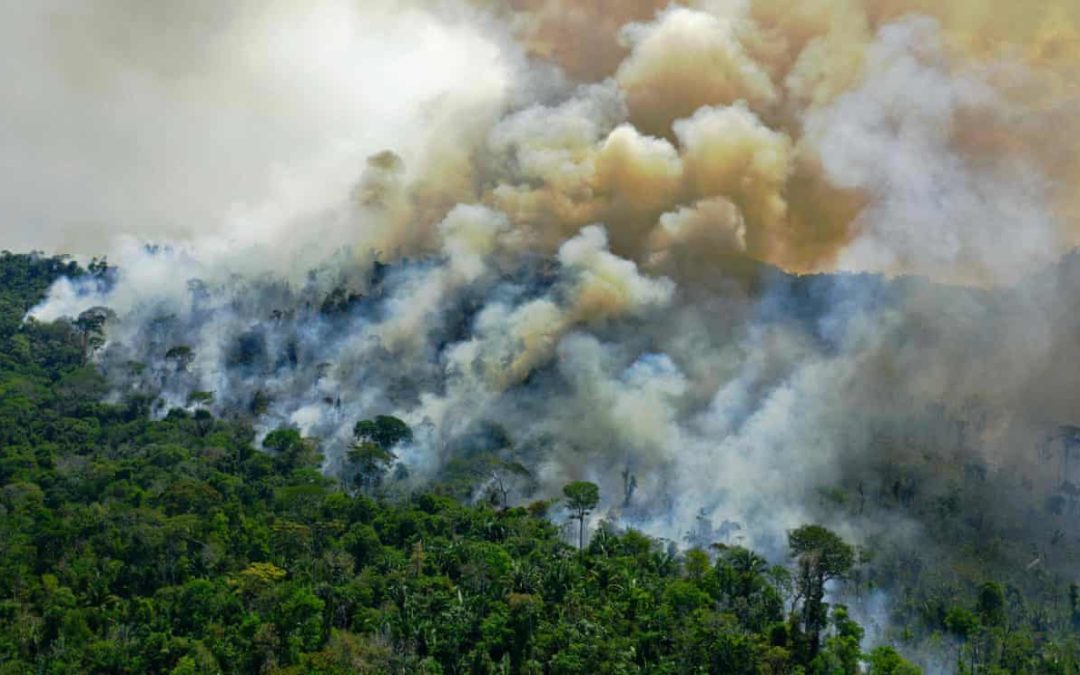
Amazon rainforest now emitting more CO2 than it absorbs
SOURCE: The Guardian
DATE: July 14, 2021
SNIP: The Amazon rainforest is emitting a billion tonnes of carbon dioxide a year, according to a study. The giant forest had been absorbing the emissions driving the climate crisis but is now causing its acceleration, researchers said.
Most of the emissions are caused by fires, many deliberately set to clear land for beef and soy production. But even without fires, hotter temperatures and droughts mean the south-eastern Amazon has become a source of CO2, rather than a sink.
Growing trees and plants have taken up about a quarter of all fossil fuel emissions since 1960, with the Amazon playing a major role as the largest tropical forest. Losing the Amazon’s power to capture CO2 is a stark warning that slashing emissions from fossil fuels is more urgent than ever, scientists said.
The research used small planes to measure CO2 levels up to 4,500m above the forest over the last decade, showing how the whole Amazon is changing. Previous studies indicating the Amazon was becoming a source of CO2 were based on satellite data, which can be hampered by cloud cover, or ground measurements of trees, which can cover only a tiny part of the vast region.
The scientists said the discovery that part of the Amazon was emitting carbon even without fires was particularly worrying. They said it was most likely the result of each year’s deforestation and fires making adjacent forests more susceptible the next year. The trees produce much of the region’s rain, so fewer trees means more severe droughts and heatwaves and more tree deaths and fires.
The government of Brazil’s president, Jair Bolsonaro, has been harshly criticised for encouraging more deforestation, which has surged to a 12-year high, while fires hit their highest level in June since 2007.
Luciana Gatti, at the National Institute for Space Research in Brazil and who led the research, said: “The first very bad news is that forest burning produces around three times more CO2 than the forest absorbs. The second bad news is that the places where deforestation is 30% or more show carbon emissions 10 times higher than where deforestation is lower than 20%.”
Fewer trees meant less rain and higher temperatures, making the dry season even worse for the remaining forest, she said: “We have a very negative loop that makes the forest more susceptible to uncontrolled fires.”
Prof Scott Denning, at Colorado State University, said the aerial research campaign was heroic. “In the south-east, the forest is no longer growing faster than it’s dying. This is bad – having the most productive carbon absorber on the planet switch from a source to a sink means we have to eliminate fossil fuels faster than we thought.”

Center in Pendleton sees influx of injured baby hawks due to heat wave
SOURCE: OPB
DATE: July 12, 2021
SNIP: The calls flooded into Blue Mountain Wildlife first thing in the morning Monday, June 28 — dozens of baby hawks, desperate to escape the blast of early summer heat, bailed from their nests and plummeted to the ground.
Calls poured in day after day as temperatures pushed beyond 110 degrees across Eastern Oregon. In her 30 years as director of the wildlife rehabilitation center outside of Pendleton, Lynn Tompkins had not seen anything like it.
“They had no choice,” Tompkins, 68, told the East Oregonian. “It was just too bloody hot to survive.”
In all, the center took in nearly 50 nestling Swainson’s and Cooper’s hawks after they leaped from their nests in the extreme heat wave that baked the Pacific Northwest last week. Thirteen of the raptors suffered injuries severe enough they had to be euthanized.
“We knew the temperature was going to spike beforehand, and we assumed we might get a few more calls,” said Trisha Marquez, a volunteer who fielded the calls and who is Tompkins’ niece. “But we did not expect this at all.”
Blue Mountain Wildlife lodged 157 more birds compared to the same day last year. The influx was more than the small staff could handle. They hardly had the space to put them all, and eventually, they asked people to turn on their sprinklers and hoses and set out pans of water for less-injured birds to cool themselves down.
Tompkins said they will typically see a few injured birds who display this sort of behavior in heat waves around July or August. But this year, with the heat arriving earlier and surging higher, it caught the babies right in their nesting period.
“The conditions were just right, or wrong,” Tompkins said, adding, “When your normal body temperature is like 100, and it’s 115, you have no way of moderating the temperature except for getting out of there.”
Birds die across PNW amid heat wave
The birds came from across the region, including Southeastern Washington, as wildlife center’s facility in the Tri-Cities took in more than 70, Tompkins said.
And it’s not just happening here. A rehabilitation center in Delta, British Columbia, saw a similar uptick amid the heat wave last week. The center has about 140 more birds than last year at this time, and many babies that flung themselves from their nests didn’t make it, a Vancouver news station reported.
In Seattle, state officials began monitoring a colony of Caspian terns last week after dozens of premature seabirds fled their rooftop nests as temperatures reached 108 degrees. Too young to fly, they fell to their death.
Marquez said events such as the heat wave can have a population-wide effect.
“Usually, rehabbers make a difference for one bird at a time,” Marquez said. “Overall, we can have an impact, but this is a whole generation of a species of bird.”
A growing body of research from experts around the world suggests as the planet warms due to climate change, species will disappear at an accelerating rate. Some studies suggest the planet has entered its sixth mass extinction of wildlife.
An analysis by scientists from prominent universities across the world, published in the journal Proceedings of the National Academy of Sciences in 2020, found more than 500 species of land animals are on the brink of extinction and likely will die off within 20 years. That will have a domino effect, the research shows, with interdependent species dying one after another, causing extinction rates to accelerate.
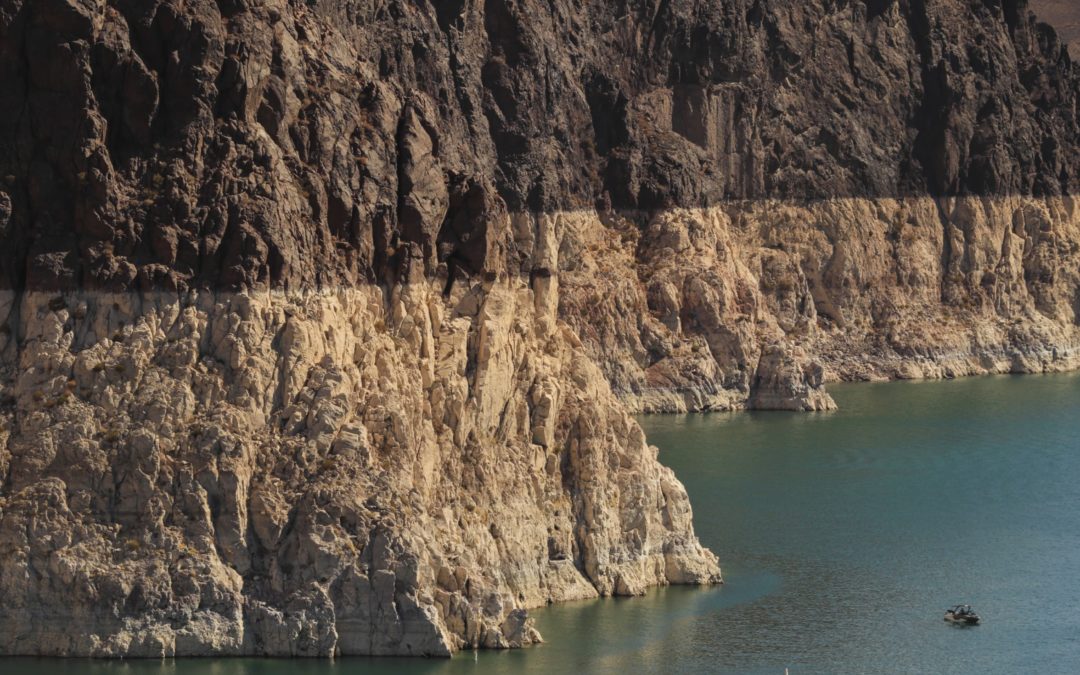
‘Unrecognizable.’ Lake Mead, a lifeline for water in Los Angeles and the West, tips toward crisis
SOURCE: Los Angeles Times
DATE: July 11, 2021
SNIP: Lake Mead, a lifeline for 25 million people and millions of acres of farmland in California, Arizona, Nevada and Mexico, made history when it was engineered 85 years ago, capturing trillions of gallons of river water and ushering in the growth of the modern West.
But after years of an unrelenting drought that has quickly accelerated amid record temperatures and lower snowpack melt, the lake is set to mark another, more dire turning point. Next month, the federal government expects to declare its first-ever shortage on the lake, triggering cuts to water delivered to Arizona, Nevada and Mexico on Jan. 1. If the lake, currently at 1,068 feet, drops 28 more feet by next year, the spigot of water to California will start to tighten in 2023.
The crisis, said Eric Kuhn, former general manager of the Colorado River Conservation District, can no longer be ignored. “According to Merriam-Webster, a drought is a temporary condition,” he said. What is happening, he suggested, is something more permanent and troubling. “This is aridification.”
As fires sweep over large swaths of the West and scorching temperatures fry others, the scarcity of water is a less visible but perhaps the most pressing consequence of climate change confronting the states that depend on Lake Mead.
Lake Mead and the Colorado River are created from melted snow that flows into La Poudre Pass in the Rocky Mountains. Seven Western states — California, Wyoming, Colorado, New Mexico, Utah, Nevada and Arizona — as well as 29 tribes and Mexico depend on the water from the river. Each has signed successive treaties stating how much they receive from the river and dams, with the current agreements expiring in 2025.
Concerns over Lake Mead’s water levels came as negotiators met in Denver last month to take a preliminary step toward a four-year process to update operating rules and allocations for the reservoirs along the river.
According to the U.S. Bureau of Reclamation, which manages the river system, drought in Lake Mead is far from an emergency. Yet, the water level is nowhere near what it was a year ago. Having dropped 1.4 million acre-feet from April 2020 to April 2021 and 886,000 acre-feet since then, Lake Mead’s losses show no sign of slowing down.
But to many experts, it’s a make-or-break moment in the history of a river that has been for decades over-allocated, with less water available than is needed. What’s at stake for Lake Mead is a recreation area that draws more than 8 million visitors a year and generates $336 million annually.
While computer modeling helps water managers anticipate future shortages that could affect water supply and tourism, there is a gap in the understanding, said Kuhn, the former head of the Colorado River Conservation District. Predicting increased temperatures is easy — over the last century the West has heated up by nearly 2 degrees — but understanding how high temperature affects precipitation is less certain.
The monsoon rains that typically hit the Southwest during the summer never materialized last year. In Colorado, drier soil from higher-than-typical temperatures and lower air moisture has led to less melted snow draining into rivers and streams. As a result of the drought in Northern California, Los Angeles’ Metropolitan Water District is drawing down its reserves with water taken from the Colorado River, which will continue to flow uninterrupted through 2022.
But what comes next?
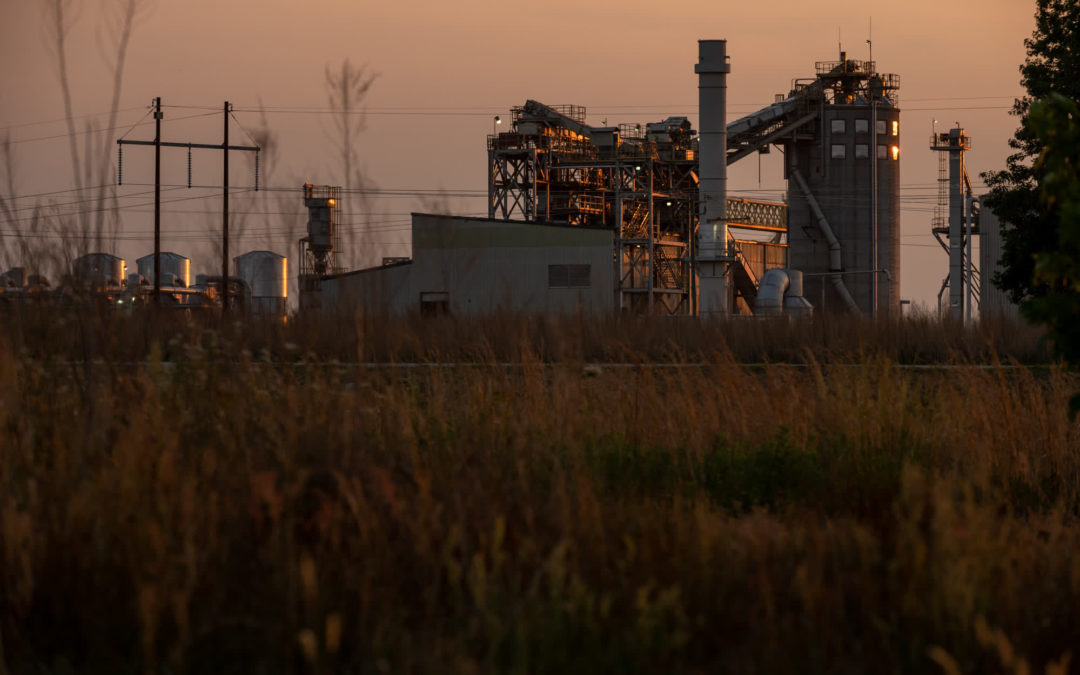
How marginalized communities in the South are paying the price for “green energy” in Europe
SOURCE: CNN
DATE: July 9, 2021
SNIP: In 2009, the European Union (EU) pledged to curb greenhouse gas emissions, urging its member states to shift from fossil fuels to renewables. In its Renewable Energy Directive (RED), the EU classified biomass as a renewable energy source — on par with wind and solar power. As a result, the directive prompted state governments to incentivize energy providers to burn biomass instead of coal — and drove up demand for wood.
So much so that the American South emerged as Europe’s primary source of biomass imports.
Earlier this year, the EU was celebrated in headlines across the world when renewable energy surpassed the use of fossil fuels on the continent for the first time in history.
But scientists and experts say it’s too early to celebrate, arguing that relying on biomass for energy has a punishing impact not only on the environment, but also on marginalized communities — perpetuating decades of environmental racism in predominantly Black communities like Northampton County, where Macklin and his family have lived for generations.
To say cutting down trees and burning them for power is a renewable energy source feels counterintuitive and, in reality, it is.
Burning wood is less efficient than burning coal and releases far more carbon into the atmosphere, according to almost 800 scientists who wrote a 2018 letter to the European parliament, pushing members to amend the current directive “to avoid expansive harm to the world’s forests and the acceleration of climate change.” President Joe Biden and other world leaders received a similar letter from hundreds of climate scientists earlier this year.
The EU directive that encouraged the pivot to biomass also left a loophole — it did not prevent the leveling of rooted trees for wood pellet production.
“I can’t think of anything that harms nature more than cutting down trees and burning them,” said William Moomaw, professor emeritus of international environmental policy at Tufts University.
Yet by burning wood, European power plants can reduce their carbon footprint — at least on paper.
In 1996, scientists at the United Nations devised a method to measure global carbon emissions. To simplify the process and avoid double counting, they suggested emissions from burning biomass should be calculated where the trees are cut down, not where the wood pellets are burned.
The EU adopted this methodology in its Renewable Energy Directive, allowing energy companies to burn biomass produced in the US without having to report the emissions.
The accounting method — which was never intended to assign national responsibility for carbon emissions, according to climate experts — has created a lot of discussion and disagreement among advocates, scientists and policymakers. But ultimately it is not the accounting of carbon that is the problem, it’s the emissions.
“It doesn’t change the physical reality,” said Tim Searchinger, senior research scholar at Princeton University. “A law designed to reduce emissions that in reality encourages an increase in emissions … has to be flawed,” he said, referring to Europe’s directive.
Ultimately, Europe is not reducing emissions by burning American trees — it’s just outsourcing them to the United States.
“The idea was to curb our addiction to fossil fuels,” said Bas Eickhout, Dutch politician and member of the European Parliament. Biomass was an attractive option for EU countries at the time, he explained, because it was much cheaper than solar or wind power and could be “mixed in” when burning coal.
However, European decision-makers didn’t fully consider the repercussions of importing biomass, Eickhout said, adding they “were too naïve.”
“The production of biomass has become an industrial process which means something has gone fundamentally wrong,” he said. “The professionalization of the biomass industry is a problem that needs attention.”
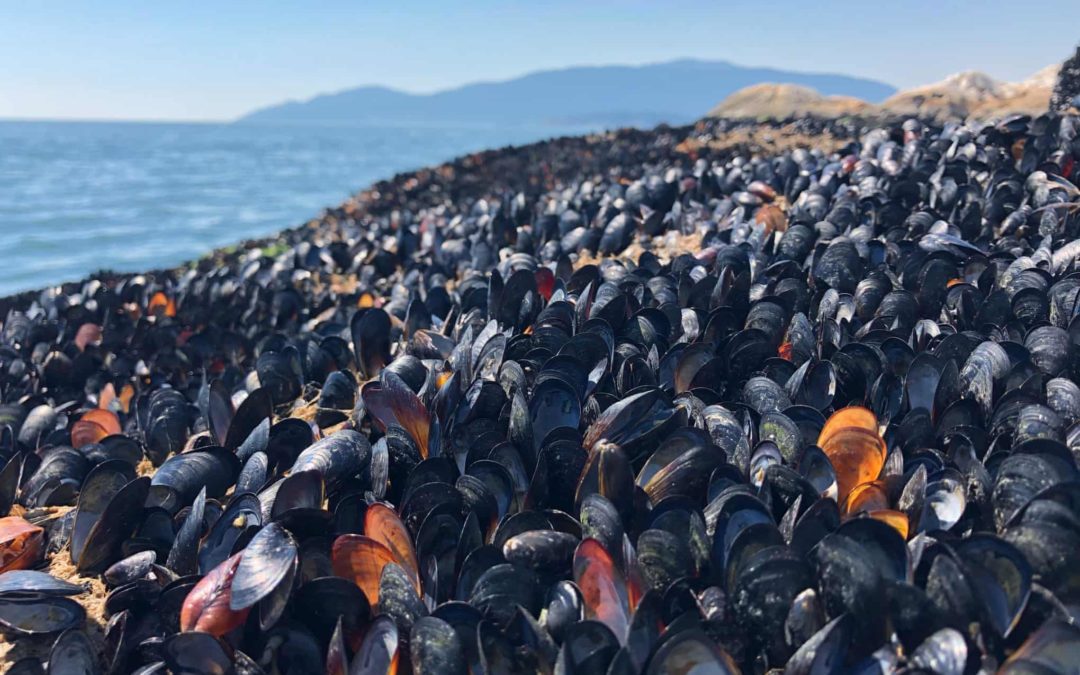
‘Heat dome’ probably killed 1bn marine animals on Canada coast, experts say
SOURCE: The Guardian
DATE: July 8, 2021
SNIP: More than 1 billion marine animals along Canada’s Pacific coast are likely to have died from last week’s record heatwave, experts warn, highlighting the vulnerability of ecosystems unaccustomed to extreme temperatures.
The “heat dome” that settled over western Canada and the north-western US for five days pushed temperatures in communities along the coast to 40C (104F) – shattering longstanding records and offering little respite for days.
The intense and unrelenting heat is believed to have killed as many as 500 people in the province of British Columbia and contributed to the hundreds of wildfires currently burning across the province.
But experts fear it also had a devastating impact on marine life.
Christopher Harley, a marine biologist at the University of British Columbia, has calculated that more than a billion marine animals may have been killed by the unusual heat.
A walk along a Vancouver-area beach highlighted the magnitude of devastation brought on by the heatwave, he said.
“The shore doesn’t usually crunch when you walk on it. But there were so many empty mussel shells lying everywhere that you just couldn’t avoid stepping on dead animals while walking around,” he said.
Harley was struck by the smell of rotting mussels, many of which were in effect cooked by the abnormally warm water. Snails, sea stars and clams were decaying in the shallow water. “It was an overpowering, visceral experience,” he said.
While the air around Vancouver hovered around the high 30s (about 100F), Harley and a student used infrared cameras to record temperatures above 50C (122F) along the rocky shore.
Mussels are hardy shellfish, tolerating temperatures into the high 30s. Barnacles are even sturdier, surviving the mid-40s (about 113F) for at least a few hours.
“But when the temperatures get above that, those are just unsurvivable conditions,” he said.
The mass death of shellfish would temporarily affect water quality because mussels and clams help filter the sea, Harley said, keeping it clear enough that sunlight reaches the eelgrass beds while also creating habitats for other species.
“You can fit thousands on to an area the size of a stove top. And there are hundreds of kilometres of rocky beach that are hospitable to mussels. Each time you scale up, the numbers just keep getting bigger and bigger. And that’s just mussels. A lot of sea life would have died.”
While mussels can regenerate over a period of two years, a number of starfish and clams live for decades, and they reproduce more slowly, so their recovery is probably going to take longer.
Harley has also received reports from colleagues of dead sea anemones, rock fish and oysters.
Another heatwave is expected to strike the western United States and south-western Canada in the coming week, highlighting the relentlessness of the dry summer heat.
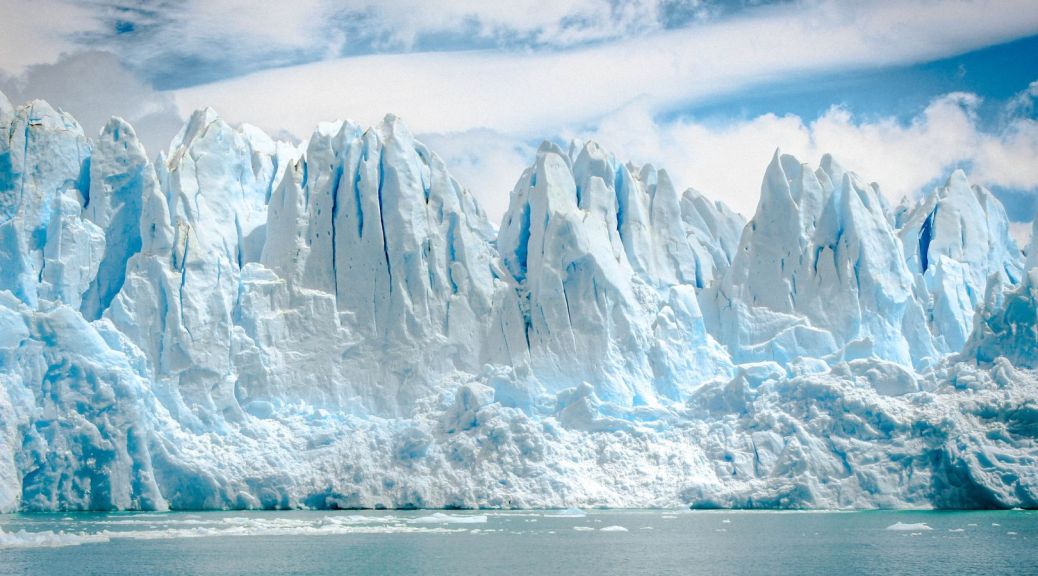
Earth tipping points could destabilize each other in domino effect
SOURCE: MongaBay
DATE: June 23, 2021
SNIP: When the first tile in a line of dominoes tips forward, it affects everything in front of it. One after another, lined-up dominoes knock into each other and topple. This is essentially what could happen to ice sheets, ocean currents and even the Amazon biome if critical tipping points are crossed, according to a new risk analysis. The destabilization of one element could impact the others, creating a domino effect of drastic changes that could move the Earth into an unfamiliar state — one potentially dangerous to the future of humanity and nature as we know it.
The study, published this month in Earth System Dynamics, examines the interactions between five subsystems that are known to have vital thresholds, or tipping points, that could trigger irreversible changes. They include the West Antarctic Ice Sheet, the Greenland Ice Sheet, the Atlantic Meridional Overturning Circulation (AMOC), the El Niño–Southern Oscillation (ENSO) and the Amazon Rainforest.
Scientists believe the AMOC could reach its critical threshold when warming temperatures weaken the current enough to substantially slow it, halt it, or redirect it, which could plunge parts of the northern hemisphere into a period of record cold, even as global warming continues elsewhere. Likewise, the Antarctic ice sheet may reach its irreversible threshold when warming temperatures trigger a state of constant ice loss, which could ultimately result in a 4-meter (13-foot) rise in global sea levels over the coming centuries. In fact, it’s suggested that the West Antarctic Ice Sheet may have already passed its critical threshold, and that ice loss is unstoppable now.
These individual tipping points are largely being driven by human-caused climate change, which is considered to be one of nine planetary boundaries — scientifically identified limits on change to vital Earth systems that currently regulate and sustain life. Overshooting those boundaries could lead to new natural paradigms catastrophic for humanity. Climate change has its own threshold of 350 parts per million (ppm) of CO2, which is the amount that scientists say the atmosphere can safely hold, but this threshold was already passed in 1988. In 2021, CO2 exceeded 417 ppm, which is 50% higher than pre-industrial levels.
To conduct this new study, the research team used a conceptual modeling process to analyze the interactions between these five Earth subsystems. What they found was that more than a third of these elements showed “tipping cascades” even before temperatures reached 2° Celsius (3.6° Fahrenheit) above pre-industrial levels, which is the upper limit of the 2015 Paris climate agreement. At present, almost no nation on Earth is on target to meet its Paris carbon reduction goals.
Significantly, the study also found that the interactions between the tipping elements could lower critical temperature thresholds, essentially allowing tipping cascades to occur earlier than anticipated. Additionally, the researchers found that the Greenland Ice Sheet would function as an initiator of tipping cascades, while the AMOC would act as a transmitter that would push further changes, including dieback of the Amazon. Most of these tipping elements have been projected to have a destabilizing effect on each other, with the exception of the weakening of the AMOC, which could actually make the North Atlantic region colder and help stabilize the Greenland Ice Sheet.
“We found that the overall interactions tend to make [things] worse, so to say, and tend to be destabilizing,” lead author Nico Wunderling, a scientist at the Potsdam Institute for Climate Impact Research in Germany, told Mongabay.
“The important takeaway message from this study is that the cascading causal interactions between four different climate tipping elements lower the ‘safe’ temperature level at which the risk of triggering tipping points is minimized,” Lenton told Mongabay in an email. “In fact the study suggests that below 2C of global warming (above pre-industrial) — i.e. in the Paris agreement target range — there could still be a significant risk of triggering cascading climate tipping points.”
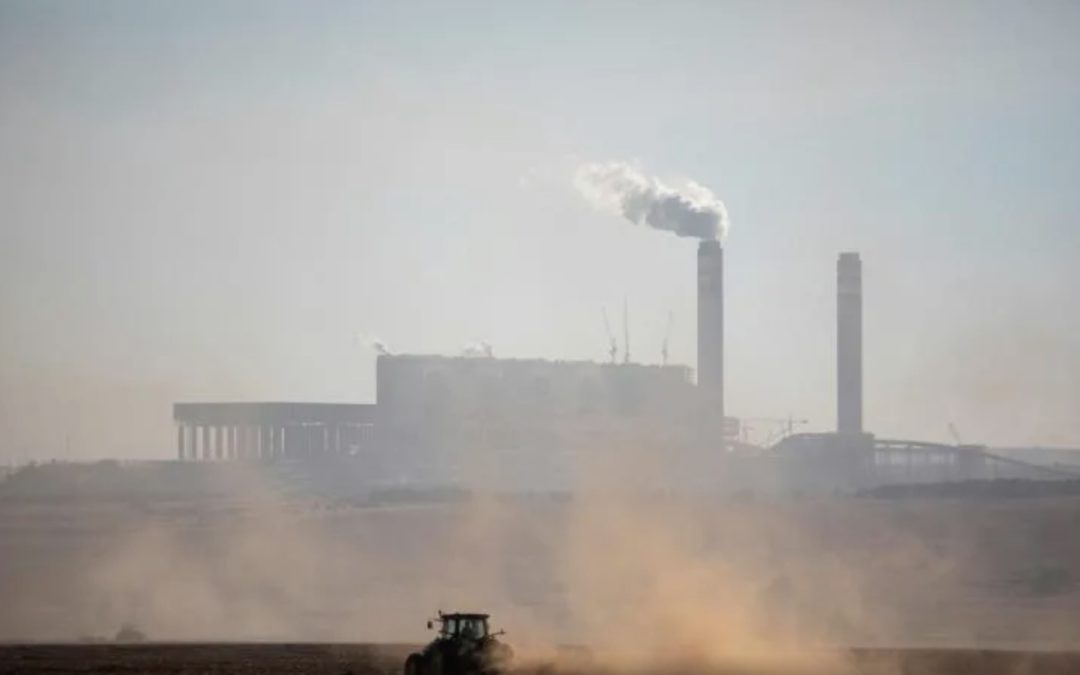
Crushing climate impacts to hit sooner than feared: draft UN report
SOURCE: Agence-France Presse and Phys.org
DATE: June 22, 2021
SNIP: Climate change will fundamentally reshape life on Earth in the coming decades, even if humans can tame planet-warming greenhouse gas emissions, according to a landmark draft report from the UN’s climate science advisors obtained by AFP.
Species extinction, more widespread disease, unliveable heat, ecosystem collapse, cities menaced by rising seas — these and other devastating climate impacts are accelerating and bound to become painfully obvious before a child born today turns 30.
The choices societies make now will determine whether our species thrives or simply survives as the 21st century unfolds, the Intergovernmental Panel on Climate Change (IPCC) says in a draft report seen exclusively by AFP.
But dangerous thresholds are closer than once thought, and dire consequences stemming from decades of unbridled carbon pollution are unavoidable in the short term.
“The worst is yet to come, affecting our children’s and grandchildren’s lives much more than our own,” the report says.
By far the most comprehensive catalogue ever assembled of how climate change is upending our world, the report reads like a 4,000-page indictment of humanity’s stewardship of the planet.
But the document, designed to influence critical policy decisions, is not scheduled for release until February 2022 — too late for crunch UN summits this year on climate, biodiversity and food systems, some scientists say.
In response to AFP’s reporting, the IPCC released a statement saying it “does not comment on the contents of draft reports while work is still ongoing”.
– Allies into enemies –
The draft report comes at a time of global “eco-awakening” and serves as a reality check against a slew of ill-defined net-zero promises by governments and corporations worldwide.
The challenges it highlights are systemic, woven into the very fabric of daily life.
They are also deeply unfair: those least responsible for global warming will suffer disproportionately, the report makes clear.
And it shows that even as we spew record amounts of greenhouse gases into the atmosphere, we are undermining the capacity of forests and oceans to absorb them, turning our greatest natural allies in the fight against warming into enemies.
It warns that previous major climate shocks dramatically altered the environment and wiped out most species, raising the question of whether humanity is sowing the seeds of its own demise.
– ‘Irreversible consequences’ –
There are at least four main takeaways in the draft report, which may be subject to minor changes in the coming months as the IPCC shifts its focus to a key executive summary for policymakers.
The first is that with 1.1 degrees Celsius of warming clocked so far, the climate is already changing.
A decade ago, scientists believed that limiting global warming to two degrees Celsius above mid-19th century levels would be enough to safeguard our future.
That goal is enshrined in the 2015 Paris Agreement, adopted by nearly 200 nations who vowed to collectively cap warming at “well below” two degrees Celsius — and 1.5 degrees if possible.
On current trends, we’re heading for three degrees Celsius at best.
Earlier models predicted we were not likely to see Earth-altering climate change before 2100.
But the UN draft report says that prolonged warming even beyond 1.5 degrees Celsius could produce “progressively serious, centuries’ long and, in some cases, irreversible consequences”.
Last month, the World Meteorological Organization projected a 40 percent chance that Earth will cross the 1.5-degree threshold for at least one year by 2026.
For some plants and animals, it could be too late.
“Even at 1.5 degrees Celsius of warming, conditions will change beyond many organisms’ ability to adapt,” the report notes.
Coral reefs — ecosystems on which half a billion people depend — are one example.
Indigenous populations in the Arctic face cultural extinction as the environment upon which their livelihoods and history are built melts beneath their snow shoes.
A warming world has also increased the length of fire seasons, doubled potential burnable areas, and contributed to food systems losses.
– Get ready –
The world must face up to this reality and prepare for the onslaught — a second major takeaway of the report.
“Current levels of adaptation will be inadequate to respond to future climate risks,” it cautions.
Mid-century projections — even under an optimistic scenario of two degrees Celsius of warming — make this an understatement.
Tens of millions more people are likely to face chronic hunger by 2050, and 130 million more could experience extreme poverty within a decade if inequality is allowed to deepen.
In 2050, coastal cities on the “frontline” of the climate crisis will see hundreds of millions of people at risk from floods and increasingly frequent storm surges made more deadly by rising seas.
Some 350 million more people living in urban areas will be exposed to water scarcity from severe droughts at 1.5 degrees Celsius of warming — 410 million at two degrees Celsius.
That extra half-a-degree will also mean 420 million more people exposed to extreme and potentially lethal heatwaves.
“Adaptation costs for Africa are projected to increase by tens of billions of dollars per year with warming greater than two degrees,” the report cautions.
– Point of no return –
Thirdly, the report outlines the danger of compound and cascading impacts, along with point-of-no-return thresholds in the climate system known as tipping points, which scientists have barely begun to measure and understand.
A dozen temperature trip wires have now been identified in the climate system for irreversible and potentially catastrophic change.
Recent research has shown that warming of two degrees Celsius could push the melting of ice sheets atop Greenland and the West Antarctic — with enough frozen water to lift oceans 13 metres (43 feet) — past a point of no return.
Other tipping points could see the Amazon basin morph from tropical forest to savannah, and billions of tonnes of carbon leech from Siberia’s permafrost, fuelling further warming.
In the more immediate future, some regions — eastern Brazil, Southeast Asia, the Mediterranean, central China — and coastlines almost everywhere could be battered by multiple climate calamities at once: drought, heatwaves, cyclones, wildfires, flooding.
But global warming impacts are also amplified by all the other ways that humanity has shattered Earth’s equilibrium.
These include “losses of habitat and resilience, over-exploitation, water extraction, pollution, invasive non-native species and dispersal of pests and diseases,” the report says.
– ‘Transformational change’ –
There is very little good news in the report, but the IPCC stresses that much can be done to avoid worst-case scenarios and prepare for impacts that can no longer be averted, the final takeaway.
Conservation and restoration of so-called blue carbon ecosystems — kelp and mangrove forests, for example — enhance carbon stocks and protect against storm surges, as well as providing wildlife habitats, coastal livelihoods and food security.
Transitioning to more plant-based diets could also reduce food-related emissions as much as 70 percent by 2050.
But simply swapping a gas guzzler for a Tesla or planting billions of trees to offset business-as-usual isn’t going to cut it, the report warns.
“We need transformational change operating on processes and behaviours at all levels: individual, communities, business, institutions and governments,” it says.
“We must redefine our way of life and consumption.”
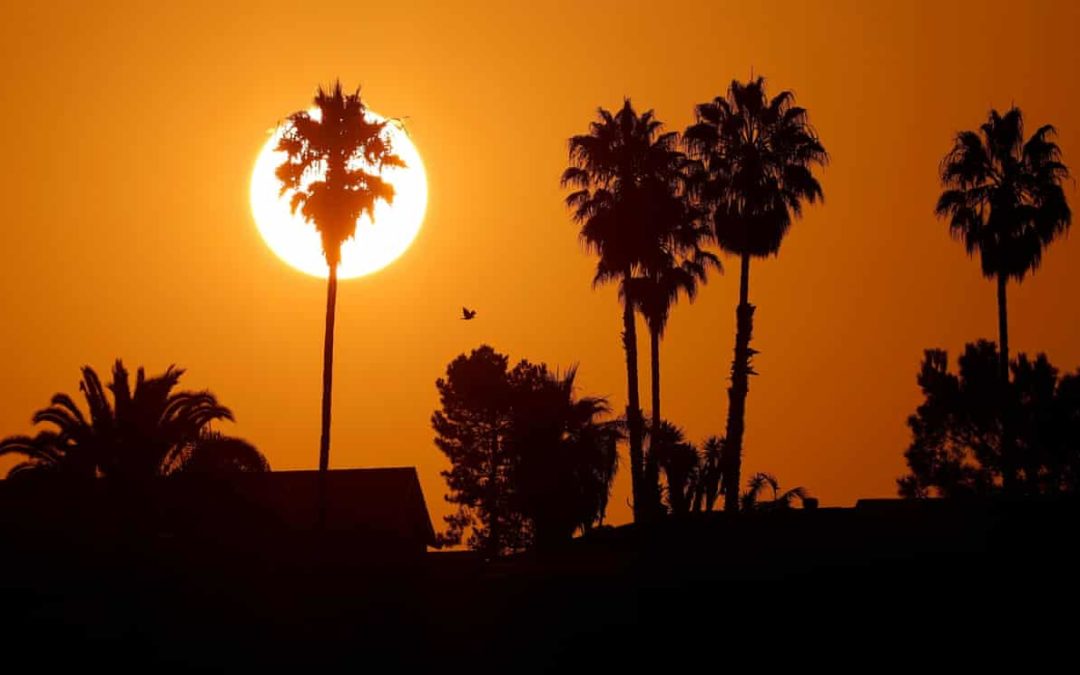
Earth is trapping ‘unprecedented’ amount of heat, Nasa says
SOURCE: The Guardian
DATE: June 17, 2021
SNIP: The Earth is trapping nearly twice as much heat as it did in 2005, according to new research, described as an “unprecedented” increase amid the climate crisis.
Scientists from Nasa, the US space agency, and the National Oceanic and Atmospheric Administration (Noaa), reported in a new study that Earth’s “energy imbalance approximately doubled” from 2005 to 2019. The increase was described as “alarming”.
“Energy imbalance” refers to the difference between how much of the Sun’s “radiative energy” is absorbed by Earth’s atmosphere and surface, compared to how much “thermal infrared radiation” bounces back into space.
“A positive energy imbalance means the Earth system is gaining energy, causing the planet to heat up,” Nasa said in a statement about this study.
Upticks in greenhouse gas emissions keep heat in Earth’s atmosphere, trapping radiation that would otherwise move into space. This warming spurs other changes, including ice and snow melt. An increase in water vapor, and changes to clouds, could further exacerbate this warming, Nasa said.
The study found that this doubling is the result, in part, by an increase in greenhouse gases and water vapor, as well as decreases in clouds and ice.
[T]his research provides only a glimpse in relation to longterm climate change, and, according to Nasa, that “it’s not possible to predict with any certainty what the coming decades might look like for the balance of Earth’s energy budget”.
The study did determine that unless the rate of heat uptake slows, greater shifts in climate should be expected.
